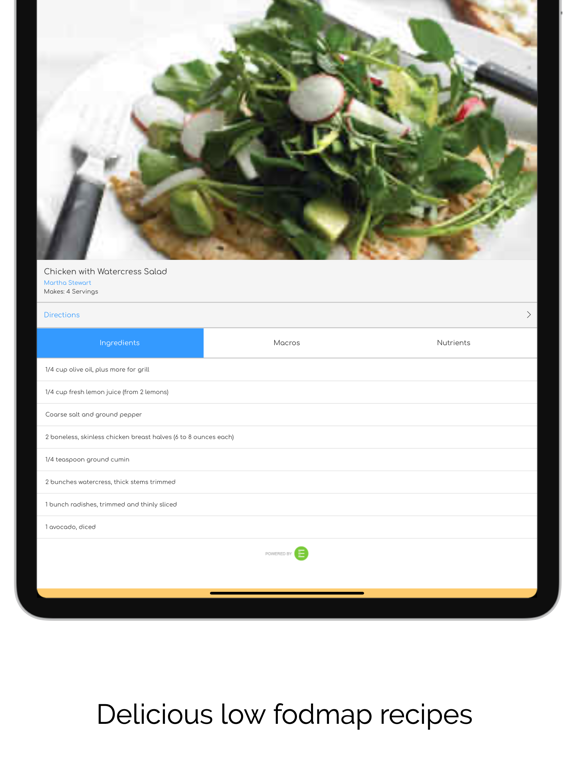My Fodmap: SIBO Diet Tracker
- Publisher: Prestige Worldwide Apps LLC
- Genre: Health & Fitness
- Released: 10 May, 2020
- Size: 43.2 MB
- Price: FREE!
 Click here to request a review of this app
Click here to request a review of this app
- App Store Info
Description
How My Fodmap Helps You1. Quickly learn the basics, scientific benefits & drawbacks, and how to get started on a low fodmap diet.
2. Quickly refer to the fodmap levels food reference list any time you need to see what you can eat in order to stay avoid SIBO & IBS symptoms such as gas, bloating, abdominal pain, and diarrhea.
3. Easily search recipes and meal prep ideas using in the recipes section.
4. Use the AI Chatbot to get instant advice from a nutritional expert
What are FODMAPs?
FODMAP is an acronym for fermentable oligo-, di-, mono-saccharides and polyols. These are basically all simple carbohydrates that can trigger digestive symptoms like gas, bloating, and stomach pain. Avoiding them is not always easy as they are found in all different types of foods, natural and processed. Additionally, some people are only triggered by one or two of the FODMAPs, not necessarily all of them. The diet focuses on avoiding all fodmaps that irritate your digestive system for a certain amount of time, and then reintroducing them gradually. The Fodmaps diet is often used for the Small intestinal bacterial overgrowth (SIBO) diet, to reduce to reduce inflammation in the digestive tract and bacterial overgrowth in your small intestine.
Why?
The biggest benefit of the low-FODMAP diet is reduction in IBS and digestive symptoms. This is not a diet targeted to lose weight or gain muscle, but for a higher quality of life from removing digestive issues.
Phases of the FODMAP Diet:
Elimination Phase: Initially, all high FODMAP foods are eliminated from the diet for a period of 3 to 8 weeks.
Reintroduction Phase: High FODMAP foods are gradually reintroduced to identify which ones trigger symptoms.
Personalization Phase: A long-term dietary plan is created, avoiding only the FODMAPs that trigger symptoms.
High and Low FODMAP Foods:
High FODMAP foods include certain fruits, vegetables, dairy products, legumes, and sweeteners.
Low FODMAP foods include meats, eggs, certain grains like rice and oats, and specific fruits and vegetables like strawberries and carrots.
Benefits:
The primary benefit is symptom relief for individuals with IBS, SIBO or other gastrointestinal issues. It may help identify specific food intolerances.
Drawbacks:
The diet can be restrictive and may be challenging to follow without professional guidance. It may result in nutritional deficiencies if not properly planned.
My Fodmap Diet Guide & Plan:
-The Basics: What are Fodmaps?
-The Benefits: Backed by scientific studies, not by fad homeopathic guru practitioners.
-Side-Effects of the Diet: Does an IBS diet such as this one cause problems long term?
-FAQ: Frequently asked questions about this gut healthy program.
-How to Get Started: The three stages explained: Restriction, Reintroduction, and Personalization.
-Food List: See 100s of different foods fodmap levels to see if they will affect your body
-1000s of low Fodmap Recipes
-Diet Translations for English, French, and Spanish
The information in this app is not intended to replace a one-on-one relationship with a qualified health care professional and is not intended as medical advice. My Fodmap encourages you to make your own health care decisions based upon your research and in partnership with a qualified health care professional.
For Support Issues, please email us at [email protected]

























